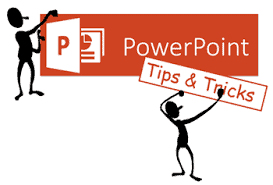PowerPoint. Is it Powerful or Pointless?
Many of the clients who I work with use Power Point. Sometimes I question whether they need it or not. PowerPoint was developed as a series of slides for the Mac computer in the 1980’s by Robert Gaskins. It’s a presentation software program that uses a graphical approach to presentations in the form of slideshows that accompany the oral delivery of the topic.
Words, Words, Words!
I don’t have a problem with slides, as long as they enhance what you’re saying. My biggest complaint when I watch a presentation, is often there are words on the slide and the speaker is saying something else. Where do we, as an audience focus? For me, nowhere. I try my best to listen to what the speaker is saying, but if there are words on the slides that I have to read, I get confused and zone out.
Why are we so dependent?
When we prepare for a presentation or speech, we want to excel. We want the audience to determine that we are smart. So, we go overboard and find out as much information on the subject and put it on a slide. Super exciting for the audience? Not! Why not just send us a handout and not even present?
Sometimes presenters read off the slides. When that happens, I want to stand up and shout, “Hey, we’re smart, too and we can read!”
Here is what one of my clients Margot Ross-Graham has to say about PowerPoint:
I love PowerPoint. It is an excellent tool to help facilitators share messages with groups and keep sessions on track. A few key messages, one or two graphs and important statistics make for a powerful PowerPoint presentation. Sadly, that is not how PowerPoints are generally used. Despite all the tips available to presenters on how to maximize a PowerPoint presentation many clutter each slide with too much information and simply read from the screen. This is a completely useless way to engage an audience. In fact, it begs the question “why would someone want to come to my presentation when they can read my PowerPoint deck and stay home. “ Once I started asking myself that question I decided that when I need to share statistics, formulas or graphic descriptors a PowerPoint presentation might be my best tool. However, when I want to share a compelling story that can help individuals or groups grasp an important message, pictures are much more powerful. Moving away from traditional PowerPoint allowed me to spend less time on fonts and bullet formatting and more time on my actual content. Today when I prepare for a presentation I look for opportunities to capture the essence of my message in one or two pictures. That gives me time to very clear on what message I want to leave, practice my delivery, and engage my audience. With pictures, I am able to spend more time communicating with the audience and less time reading to the audience. When it comes to powerful presentations, a picture really is worth a thousand words.
Margot Ross-Graham, Sandbar Coaching and Consulting
But my slides are so important! And I’m not!
Margot makes some excellent points. Slides can be a crutch for the presenter. Many think that if you have many slides the audience will “stop looking at me!” (which unfortunately, is what many speakers want). I hate to break it to you, but statistics show that after a speech we remember 50% of what was said, by the next day it is 25% and a week later it is 10%. What we do remember is how the presenter made us feel.
You may have a lot of information to give. But to be memorable and have your main message sink in, the adage “less is more” often works better than a hundred bullet points that go in one ear and out the other. Focus on the feeling, message and big picture outcome. That’s what a great speech can achieve.

